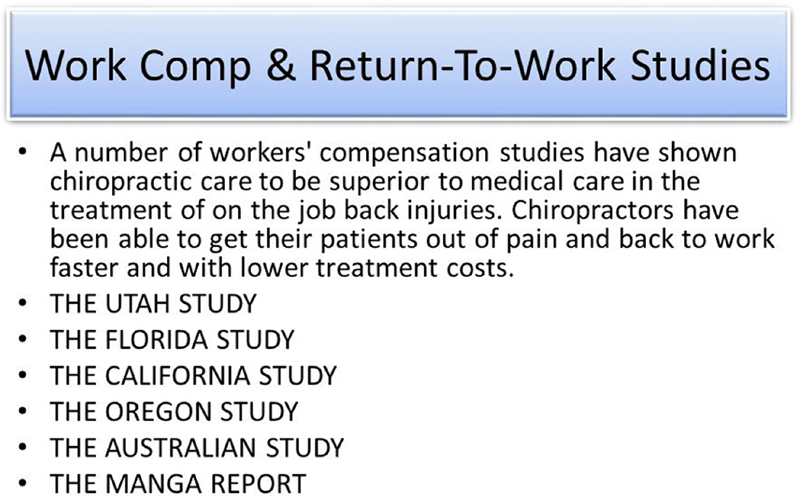25 Years of Whiplash Research
SOURCE: The American Chiropractor ~ September 2010
An interview with Arthur Croft, D.C.
Dr. Croft is the Founding Director of the Spine Research Institute of San Diego. He has been actively engaged in whiplash research for the past twenty-five years and has co-authored a best-selling textbook on whiplash (Whiplash Injuries: the Cervical Acceleration/Deceleration Syndrome, 3rd edition, 2002) and temporomandibular joint disorders (Whiplash and Temporomandibular Disorders: an Interdisciplinary Approach to Case Management), along with several other books, textbook chapters, and over 320 professional papers. He was the original developer of the now widely used whiplash (WAD) grading system, as well as the widely adopted treatment guidelines. Dr. Croft wrote and produced the Emmy-nominated video Whiplash, and the most recent human subjects crash test DVD’s, Machine vs. Man I and II and is the only chiropractic physician to conduct ongoing, full scale human volunteer crash testing.
Dr. Croft is a biomechanist, a trauma epidemiologist, and chiropractic orthopaedist and lectures extensively in the United States and abroad. He serves on the editorial boards of several professional peer-reviewed chiropractic, medical, and engineering journals, including Spine, Archives of Physical Medicine and Rehabilitation, SAE, JMPT, DC Tracts, Journal of Musculoskeletal Pain, Chiropractic Technique, and is a senior editor of the Journal of Whiplash-Related Disorders. He has served as faculty of University of California, San Diego, Southern California University of Health Sciences, Western States Chiropractic College, and New York Chiropractic College. In addition to his own research, Dr. Croft has contributed to several research steering committees and has participated in RAND projects, including the cervical spine manipulation study, and has served as a grant reviewer for the Foundation for Chiropractic Education and Research and the National Institutes of Health. Dr. Croft is also a certified accident reconstructionist (NUTI). He currently serves as a panelist on the International Whiplash Task Force. Dr. Croft’s focus is public health and injury prevention and he is very close to receiving his PhD in epidemiology.
In an interview with The American Chiropractor (TAC), Dr. Croft shares some of the wisdom his studies have distilled.
Dr. Croft, please tell our readers a bit about some of the things you have been able to discover regarding whiplash through research.
Croft: Most of the discoveries concerning the whiplash phenomenon have come from the eight years of human subject crash testing we’ve done at the Spine Research Institute of San Diego. In many cases, our findings have been new and innovative and, in other cases, they have served to support or extend previous research or theory. We’ve found, for example, that occupant kinematics and biomechanics is much more complicated than previously thought and that smaller persons and larger persons have very different responses. [1] A small female will experience two to four times the head linear acceleration as a larger male in the same crash. The male, however, will experience greater rearward bending.
We’ve compared frontal and rear impact collisions under identical crash conditions. [2-3] We’ve tested the standard crash test dummy (HYBRID III) and the newer, biofidelic rear impact dummies (RID2 and BioRID II). In all cases, this was the first research to actually compare human and dummy responses on a validation platform under the same crash conditions. [8-9]
We’ve evaluated Saab’s antiwhiplash seat in a direct comparison to standard car seats. We’re the only group, to date, that has followed up with long-term surveillance of crash test volunteers using digital incliniometry, algometry, and multiple upright MRI with flexion and extension.
Unlike reports from some crash testing, we’ve documented injuries in about 30 percent of volunteers. We’ve also evaluated some standard accident reconstruction methodologies, such as the momentum/energy/restitution (MER) method and shown that it is not uniformly reliable. [6] We’ve evaluated event data recorders (EDR)—the car’s black box that records acceleration during a crash—and compared it to a gold standard data from highly sophisticated and calibrated accelerometers. Its accuracy turns out to be nonlinear, falling off at lower crash speeds. We’ve shown that 45 percent of all chronic cervical spine pain is likely the result of motor vehicle crash injury. [12] These are just some highlights of the many results and findings we’ve gained from crash testing. And then we’ve done some population-based studies [10-11] and clinical studies as well. [13]
How do you feel the chiropractic profession is prepared to deal with CAD-type injuries?
SOURCE: Read the rest of this Full Text article now!





Thank you Dr. Art Croft for your tremendous contributions to the chiropractic profession.
Dr. Croft is a tremendous lecturer and has given much to this profession.
Dr. Croft contributed the the ICAC Whiplash Management Guidelines, which have met the stringent standards to be included within the federal guidelines clearinghouse! Get a copy and check it out!
Thank you Dr Croft I wish there were more like you out there.